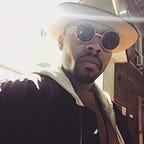I own a few wonderful cameras. When I’m commissioned to do a photo shoot the Sony Alpha 7R II is my go to tool. It’s small, reasonably fast and captures an incredible amount of detail. I also own two analog cameras: a Pentax 6x7 MLU and a Hasselblad 503CW. One of these almost always makes it into the bag alongside the A7R II but they don’t get as much burn. They’re cumbersome film cameras that lack many of the modern bells and whistles the A7R II has. But every now and then they lurch out of the depths of my bag and flex their might. Celluloid is still magical. But the camera that makes the trip every time, regardless of the assignment, is my iPhone, the greatest camera platform of all time.
Have your eyes returned from the back of your skull yet? I’m sure you’ve heard the saying “the greatest camera is the one you have on you,” and that sentiment does play a strong role in my admiration for the iPhone but it is secondary to my love for its versatility. The iPhone is a sports camera, a panoramic camera, a portrait camera, and a motion picture camera. It’s constantly evolving, every year brings with it a new version of iOS complete with a slew of nifty new camera tricks.
With iOS 9 and the iPhone 6S Live Photos were introduced and in iOS 11 Live Photo animation types arrived allowing you to finally do something interesting with those three seconds of video. Portrait Mode isn’t the professional lighting killer Apple bills it as, but when the stars align it’s frightening how great the results are. With enough light, and the right app, I can get just about any shot I want on my iPhone. That fact isn’t unique to the iPhone but due to its size, form factor, app ecosystem, and phone functionality, it’s the most compelling tool in my arsenal.
Artists tend to downplay the importance of the tool. Hearing “Wow! This photo is great, you must have a great camera,’” bruises the ego but only because it’s partially true. I’ve seen novices pick up a Canon 5D and make a beautiful image. A true test of greatness is what you accomplish under duress with less, but I digress. The iPhone is both a highly capable tool and an alarmingly limited one to a certain subset of people: professional artists. Creatives often want a new tool to come along in the same form as their old one and accomplish their tasks faster. You don’t want to adjust because that risks interrupting the flow of creativity and you never want to be jolted out of your process. The goal of every tool should be to eliminate the barriers between the conceptualization of the idea and the execution. Many photographers may argue the iPhone fails this task. The stock app doesn’t have distinct manual controls for aperture, shutter or ISO, which limits the level of control you have over a scene. There’s no RAW to speak of either, so there’s a ceiling on what you can do to the images in post. But these shortcomings are specific to the default app, not the camera system. It’s possible to wrestle all the control you need out of the iPhone camera, you just have to think different.
I get frustrated with the iPhone when I try to create an image using the same means I would on my Sony A7R II. When I treat the iPhone as just another camera platform I introduce static to my process and the execution becomes muddy. The iPhone’s limitations aren’t the same as those present on my analog cameras but they have a similar effect on my process. The limitations focus the gaze of my creativity because I’m focused on the three essentials: composition, lighting, and staging. I’m not being bombarded with camera settings, dials, and cumbersome menus (I’m looking at you Sony!). There is a joy present when creating with the iPhone that I rarely obtain using a DSLR and definitely don’t possess working with Sony’s mirrorless offerings, but do get when working on film.
Analog photography can be punishing and unpredictable but it requires you to pay closer attention than you would on a digital platform. I’m not printing dollar bills in my backyard, blowing an entire 120 roll isn’t an option for me. I have to make the most out of those 10 or 12 shots. While the iPhone isn’t as punitive an experience, it requires a similar level of determination and focus to make images that are more than just snapshots. You have to know the limits of the sensor’s dynamic range and finesse the files extensively after capture. With all that being said, photography on the iPhone is a quieter exercise than anywhere else. I don’t need to be presented with all the possibilities all the time. Sometimes I just want the viewfinder and the shutter and most of the time that’s all I need.
The iPhone is a shapeshifter, photography’s greatest Swiss Army knife, and it’s easy to see why it’s the most popular camera in the world. Apple designed a simple interface and provided the foundation for other artists to create powerful software tools to bolster the capabilities of their device. This isn’t a camera system, it’s a camera platform and Apple iterates on it at a pace that eclipses professional systems. The iPhone isn’t yet a replacement for your multi-thousand dollar camera—computational photography has to get much better before you can show up to a set with an iPhone and nothing else—but it’s a glimpse at where the camera should be going.
